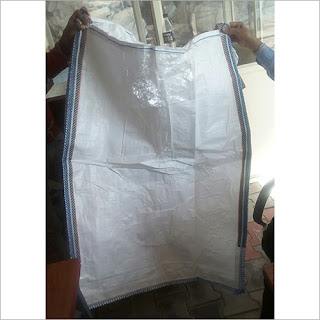BOPP Bags vs. Traditional Packaging: A Comparative Analysis
In today's ever-evolving market, packaging plays a crucial role in product presentation, preservation, and consumer satisfaction. Among the various packaging options available, BOPP (Biaxially Oriented Polypropylene) bags have gained significant attention for their versatility and functionality. This article will delve into the world of BOPP laminated bags and BOPP woven bags, comparing them to traditional packaging materials. By the end of this discussion, you'll have a comprehensive understanding of how BOPP bags stack up against their conventional counterparts.
1. Introduction
Packaging is the first point of contact between a product and its consumer. It should not only protect the contents but also engage and inform buyers. In this context, BOPP bags have emerged as a formidable alternative to traditional packaging materials.
2. Understanding BOPP Laminated Bags
BOPP laminated bags are crafted from layers of Biaxially Oriented Polypropylene, offering exceptional clarity, gloss, and printability. These bags are commonly used for snacks, confectionery, and textiles due to their ability to preserve freshness and enhance product visibility.
3. Exploring BOPP Woven Bags
BOPP woven bags combine the strength of woven polypropylene with the visual appeal of BOPP film. They are ideal for packaging bulk items like grains, seeds, and fertilizers. The woven construction ensures durability and tear resistance.
4. Traditional Packaging Materials
Traditional packaging materials like paper, jute, and non-woven polypropylene have been in use for decades. They are known for their biodegradability and eco-friendliness.
5. Strength and Durability
BOPP bags are known for their exceptional strength and durability, outperforming traditional materials in terms of tear resistance and load-bearing capacity.
6. Cost-effectiveness
While BOPP bags may have a slightly higher initial cost, their longevity and protective properties make them cost-effective in the long run.
7. Printing and Branding Options
BOPP bags offer superior printing quality, allowing for vibrant graphics and branding. Traditional materials struggle to match this level of visual appeal.
8. Environmental Impact
Traditional materials are biodegradable, but BOPP bags can be recycled, reducing their environmental footprint. However, proper disposal remains essential.
9. Moisture Resistance
BOPP bags provide excellent moisture resistance, ensuring product freshness even in humid conditions, a feature often lacking in traditional materials.
10. Customization and Design Flexibility
BOPP bags allow for intricate designs and customization, enhancing their visual appeal and brand recognition.
11. Shelf Appeal and Marketing
The vibrant and attractive appearance of BOPP bags on store shelves can boost product sales, a competitive edge over traditional packaging.
12. Recyclability
While traditional materials are biodegradable, BOPP bags can be recycled, contributing to a more sustainable packaging solution.
13. Storage and Transportation
BOPP bags are lightweight, reducing transportation costs, and their strength ensures the safe storage and transit of goods.
14. Market Trends
The packaging industry is evolving, with a growing preference for BOPP bags due to their superior qualities and eco-friendly options.
15. Conclusion
In the battle of BOPP bags vs. traditional packaging, it's clear that BOPP bags offer numerous advantages in terms of strength, visual appeal, and environmental impact. However, traditional materials have their place in the market, particularly for their eco-friendliness. The choice ultimately depends on the specific needs of the product and the brand's sustainability goals.
5 Unique FAQs
1. Are BOPP bags environmentally friendly?
BOPP bags can be recycled, making them a more sustainable choice compared to traditional materials. However, proper disposal remains crucial for minimizing their environmental impact.
2. Can traditional packaging materials match the visual appeal of BOPP bags?
Traditional materials like paper and jute may lack the vibrant printing options of BOPP bags, but they have their own classic charm that appeals to certain consumers.
3. Are BOPP bags cost-effective for businesses?
Despite their slightly higher initial cost, BOPP bags' durability and protective qualities often make them a cost-effective choice in the long term.
4. Do BOPP bags offer better moisture resistance than traditional materials?
Yes, BOPP bags provide excellent moisture resistance, ensuring product freshness, which can be a challenge for many traditional materials.
5. What are the emerging trends in the packaging industry related to BOPP bags?
The packaging industry is increasingly adopting BOPP bags due to their strength, design flexibility, and recyclability, aligning with the growing demand for eco-friendly packaging solutions.

.png)


Comments
Post a Comment